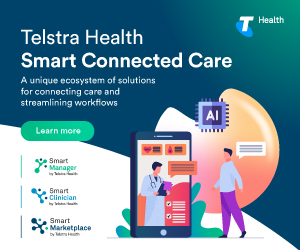EHR vs EMR: What is the Difference?
In an era where we store almost all the world’s information digitally, medical and health data are no exception. Medical professionals often use the terms Electronic Health Record (EHR) and Electronic Medical Record (EMR) interchangeably, but there are some distinct, if subtle, differences between the two.
The first of the two phrases to make its way into our vernacular was EMR, which focuses on the diagnosis and treatment of medical conditions carried out by a provider. An EHR however was originally designed to facilitate sharing information between healthcare providers.
Since EHR and EMR systems were first introduced, their usage and capabilities have become more similar, which could explain why the terms are often used interchangeably.

What is an EHR?
Perhaps the simplest way to think of EHR software is as a digital patient chart, containing information about that patient’s medical history which can be shared instantly and safely with authorised users.
The EHR represents two broad trends in modern medicine; the rise of multi-specialty clinics and multi-hospital systems, as opposed to specialty clinics, and the move towards centralisation of information.
Patients often visit multiple providers, and an EHR enables information to be transferred in real-time between different providers. Some EHR systems allow patients to access their own records, allowing them to track their treatment progress and medical history.
Key EHR Features
Compared to an EMR, an EHR contains more patient information such as a patient’s entire medical history, immunisation dates, progress notes, allergies, lab data, imaging reports and previous medications. This detailed patient information is available instantly to all enabled users of an EHR.
As accessibility is a key feature of an EHR, a major risk to consider is potential security vulnerabilities. If your practice has an EHR it’s important it is protected with comprehensive cyber security software to prevent and protect from cyber intrusions.
Broadly speaking, an EHR reflects a more patient-centred approach to healthcare.

What is an EMR?
The predecessor to the EMR was a paper record showing a patient’s medical history, diagnoses and treatments which would be delivered by one practitioner. Managing and making updates to paper records was time consuming, inefficient and led to inaccuracies due to human error. There was also less security control over paper records, in fact it was common for patient files to be housed in storage facilities or rooms within providers.
Since its introduction in 1972, the EMR is an effective like-for-like replacement for the paper record, and it has revolutionised patient care, enabling faster and more secure management of patient data. This has, in turn, led to many improvements in care delivery.
Electronically storing patient data via an EMR means patient records do not have to be physically housed onsite at a provider, helping to improve the security of patient data by preventing damage to or loss of paper records.
Compared to a paper patient record, an EMR simplifies staying abreast of updates to a patient’s record, reducing inaccuracies and the need for manual data entry.
Key EMR features
Implementing an EMR means that the days of medical professionals dedicating hours of their valuable time to complete paperwork and documentation are long gone. EMR software helps to ensure patient information remains current and accurate, giving more time back to healthcare professionals so that they can focus on patients.
EMRs can create more clarity around tracking quality of care, and can be utilised for scheduling regular healthcare events such as screenings, vaccinations and checkups. EMRs are viewed by many healthcare providers as particularly useful when a patient has been a long-term consumer of a specific provider.
EMR systems are quickly becoming a crucial part of the modern healthcare landscape and many have evolved to share patient information across different providers. As with EHRs, stringent security precautions are advised when sharing patient information across any healthcare setting, such as implementing robust cyber security software.
While EMRs today can carry out similar, if not the same, activity as an EHR, they are mostly used in hospital settings rather than in primary care, with many hospital providers seeing the benefit of digitised patient health records for sharing across hospital departments.
Key differences between EMR and EHR
While both systems manage patient medical records, the main difference between EMR and EHR systems is in their application:
- The EHR provides a comprehensive view of a patient’s entire health history. An EMR, on the other hand, is a digitised version of a patient’s medical records and information;
- An EHR is optimised for transferability and interoperability. Many EMRs can also transfer between organisations as well as within, but are often not specifically designed with this in mind;
- With an EHR system, a patient’s medical history can easily move from one practice to another if the patient moves providers. With an EMR, the patient history stays in one place unless the new facility is granted access to the previous facility’s EMR;
- Typically, medical professionals may use an EHR for decision making, while an EMR is more commonly used for diagnosis and treatment plans.
Both systems enable a highly connected patient-centred healthcare system, where patient outcomes and experiences are prioritised.
It’s important to note that, while there are differences between the two, EMR and EHR systems are more alike than they are different.
Which type of medical record system is right for your healthcare organisation?

Deciding whether an EMR or EHR is the right option for your healthcare organisation, can be determined by the size and type of your healthcare provider.
Which healthcare provider is an EMR best suited for?
EMRs are best suited to healthcare organisations in specialty clinics, however this doesn’t mean only smaller providers. In fact, an EMR can be a powerful tool for improving patient outcomes at specialty clinics regardless of their size, such as both large and small hospitals.
Some of the busiest and largest specialty clinics in the country use an EMR system to manage long-term patients.
EMRs are paving the way for hospital digitilisation, with Telstra Health’s EMR, Kyra Clinical, enabling St John of God Midland Public and Private Hospitals to become one of the most digitalised in Western Australia.
Which healthcare provider is an EHR best suited for?
EHRs are very well suited to healthcare providers operating in a larger multi-specialty organisation, or across a hospital system with multiple locations. Consider that most large cities will have a major hospital with more than one campus, or multiple facilities across the same campus.
Regional healthcare providers can also benefit from an EHR which centralises patient information in the circumstance when patients move between regional centres.
EHR vs EMR: Time to choose
Ultimately, the best way to choose between an EHR and EMR system is to understand the needs of your provider(s) and patients.
At MedicalDirector we believe that healthcare providers canbenefit enormously from digitising their systems, both for the experience of patients and healthcare professionals.
It’s simply a matter of choosing the right system for your provider’s needs and that of your patients.









